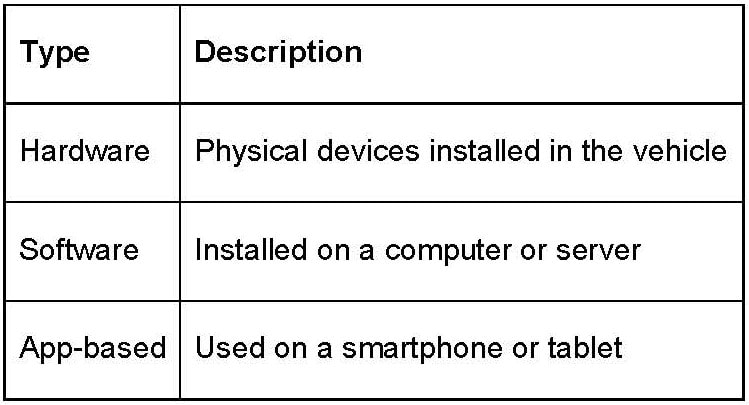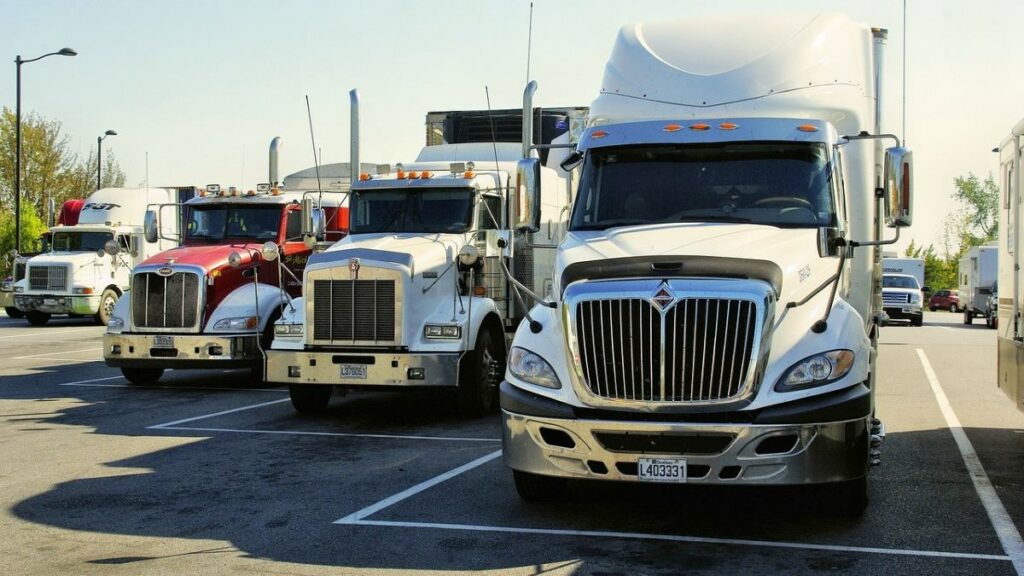Featured image by DEZALB via Pixabay
Are you struggling to keep track of your fleet’s compliance with FMCSA regulations? Look no further. This article will introduce you to the best ELD solution for your business, alleviating your concerns and streamlining your operations. So say goodbye to manual paper logs and stay ahead of the competition with this top-rated technology.
RELATED ARTICLE: DRIVER SAFETY: STEPS TRUCKING COMPANIES CAN TAKE
Choose the Right ELD Solution for Your Business
When selecting the appropriate Electronic Logging Device (ELD) solution for your company, it is crucial to take into account various factors. Doing so will ensure a smooth transition and adherence to regulations.
- Determine your specific needs and requirements, including fleet size, budget, and desired features.
- Conduct research and compare different ELD providers, considering factors such as reputation, customer reviews, and pricing.
- Verify that the ELD solution is compliant with Federal Motor Carrier Safety Administration (FMCSA) regulations.
- Also consider the user-friendliness and ease of implementation of the ELD solution.
- Look for additional features that can benefit your business, such as real-time tracking, vehicle diagnostics, and driver performance monitoring.
A. Assessing Your Business Needs
Assessing your business needs is crucial in selecting the best ELD (Electronic Logging Device) solution. For example, here are the steps to consider:
- Evaluate your fleet size and composition to determine the number of devices required.
- Identify your specific compliance requirements, such as HOS (Hours of Service) regulations.
- Consider your budget and choose a solution that aligns with your financial capabilities.
- Assess the level of technical support and training needed for your drivers and staff.
- Research different ELD providers also, and compare features, functionalities, and customer reviews.
B. Choosing the Type of ELD Solution
There are three types of ELD solutions available: hardware, software, and app-based solutions. Each type has its own advantages and considerations.

Hardware solutions offer a dedicated device with a fixed installation, providing reliability and durability. Software solutions, on the other hand, are installed on existing hardware, offering flexibility and scalability. App-based solutions are convenient and cost-effective, but they may have limitations on features and reliability. Consider your specific needs and preferences when choosing the best ELD solution for your business.
C. Considering Scalability and Future Growth
Considering scalability and future growth is crucial when choosing an ELD (Electronic Logging Device) solution for your business. Here are some steps to help you make an informed decision:
- Assess your current needs and future requirements to determine the scalability of the chosen ELD solution.
- Consider the number of vehicles and drivers you currently have. Also anticipate future growth.
- Evaluate the ELD solution’s capability to handle an increasing number of vehicles and drivers without compromising performance.
- Look for features such as fleet management tools that can accommodate a growing fleet.
- Consider the provider’s track record with supporting businesses of various sizes as well as their ability to adapt to changing regulatory requirements.
D. Evaluating Budgetary Considerations
When considering an ELD (Electronic Logging Device) solution for your business, budgetary considerations play a crucial role. For example, here are some factors to keep in mind:
- Cost: Evaluate upfront expenses, monthly fees, and any additional charges for hardware, software, and support.
- Return on Investment: Consider how the ELD solution can improve efficiency, reduce paperwork, and minimize compliance risks. Doing so will help you determine its long-term value.
- Scalability: Choose a solution that can accommodate your business’s growth and future needs without incurring significant additional costs.
- Cost of Training: Take into account the time and resources required to train your drivers and staff on the new system.
- Hidden Costs: Be aware of any hidden costs, such as data overage charges or fees for software updates.
By carefully considering these budgetary factors, you can find an ELD solution that meets your business’s needs while staying within your financial constraints.
Tips for Seamless ELD Integration
When incorporating an Electronic Logging Device (ELD) solution for your business, follow these useful tips for a smooth and successful implementation:
- Evaluate your current systems and processes to identify any potential challenges or compatibility issues.
- Research and select an ELD solution that meets the specific needs of your business, taking into consideration factors such as scalability, user-friendliness, and customer support.
- Train your drivers and staff on the proper usage of the ELD system, ensuring they understand the advantages and compliance requirements.
- Test the ELD solution before full implementation to ensure it seamlessly integrates with your existing fleet management software and devices.
- Monitor and support your drivers during the transition period, offering assistance and addressing any concerns or difficulties they may encounter.
A. Employee Training and Onboarding with an ELD Solution
Effective employee training and onboarding is crucial when implementing an ELD (Electronic Logging Device) solution for your business. For example, here are some steps to consider:
- Educate employees on the purpose and benefits of using ELDs.
- Provide comprehensive training on how to operate the ELD system, including logging in, recording hours, and submitting data.
- Offer hands-on practice sessions to ensure employees are comfortable using the technology.
- Provide clear guidelines on ELD compliance, including hours of service regulations and proper documentation.
- Continuously communicate and provide ongoing support to address any questions or concerns.
Remember, a successful ELD implementation requires a well-trained and informed workforce. Therefore, encourage open communication and provide resources to ensure a smooth transition.
B. Addressing Potential Challenges of an ELD Solution
Addressing potential challenges when implementing an ELD solution is crucial for a successful integration. For instance, here are some steps to consider:
- Evaluate your current systems and processes, identifying potential areas of conflict or resistance.
- Communicate the benefits of the ELD solution to your employees, addressing any concerns or misconceptions they may have.
- Provide comprehensive training and support to ensure that your team is comfortable and confident in utilizing the new system.
- Regularly monitor and analyze data from the ELD solution to identify any issues or areas for improvement.
- Address any technical glitches or compatibility problems promptly in order to minimize disruptions to your operations.
By following these steps, you can overcome challenges and optimize the use of your ELD solution, ultimately improving efficiency and compliance within your business.
C. Monitoring and Optimizing ELD Usage
Monitoring and optimizing the usage of an Electronic Logging Device (ELD) is crucial for business efficiency and compliance. Therefore:
- Regularly review ELD data to ensure accurate recording of driving time and hours of service.
- Train drivers on proper ELD usage in order to avoid errors and violations.
- Utilize ELD reports to analyze driver behavior, identify areas for improvement, and enhance fleet performance.
- Implement a system for proactive maintenance and troubleshooting in order to minimize downtime.
- Stay updated on ELD regulations and software updates in order to remain compliant.
Pro-tip: Encourage open communication with drivers, address any concerns or difficulties they may have with using the ELD, and provide ongoing support in order to ensure smooth ELD usage.
RELATED ARTICLE: TRUCK ADVERTISING: WHY BUSINESSES NEED TO CLIMB ABOARD
Staying Ahead with Technological Advancements
Staying ahead with technological advancements is crucial for businesses looking to optimize their operations and improve efficiency. Here are four steps to help businesses stay ahead:
- Research: Keep up-to-date on the latest technological advancements in your industry.
- Assess: Examine your current business processes and identify opportunities for technology integration.
- Invest: Allocate resources to invest in technology solutions that align with your business needs.
- Implement: Put into action the chosen technology solutions while also providing necessary training to employees.
A. Summing Up the Key Considerations
To choose the most suitable Electronic Logging Device (ELD) solution for your company, take into account the following key factors:
- Regulatory Compliance: Make sure that the ELD adheres to all relevant regulations, such as the FMCSA’s ELD mandate in the US.
- Features and Functionality: Assess the features offered by different ELD solutions, such as real-time tracking, driver behavior monitoring, and integration with other systems.
- User-Friendliness: Select an ELD solution that is user-friendly and easy for your drivers to use, reducing training time and potential errors.
- Cost: Consider both initial costs and ongoing fees, including monthly subscriptions or data plan charges.
- Customer Support: Look for a provider that offers dependable customer support, including technical assistance and resources for troubleshooting.
B. Making an Informed Decision for Your Business
When selecting an Electronic Logging Device (ELD) solution for your company, it is crucial to make an informed choice. Here are the steps to assist you in the process:
- Evaluate your business needs and requirements.
- Research different ELD providers and compare their features and prices.
- Read customer reviews and ratings in order to gain an understanding of user satisfaction.
- Also consider compatibility with your existing systems and integration capabilities.
- Check if the ELD solution is compliant with FMCSA regulations.
- Consider customer support and training options provided by the ELD provider.
- Request demos or free trials to test the user interface and functionality.
- Finally, make a decision based on your evaluation and choose the ELD solution that best meets your business needs.
C. Embracing Efficiency with the Right ELD Solution
Embracing efficiency with the right Electronic Logging Device (ELD) solution is crucial for businesses. To achieve this, consider the following factors:
- Compatibility: Make sure that the ELD solution is compatible with your current fleet management system or other software.
- User-friendly interface: Choose an ELD solution with an easy-to-use interface that drivers can navigate effortlessly.
- Real-time monitoring: Select a solution that offers real-time data on driver logs, vehicle diagnostics, and location tracking.
- Compliance: Ensure that the ELD solution meets the requirements set by the Federal Motor Carrier Safety Administration (FMCSA).
Key Takeaways
When searching for the ideal ELD solution for your company, it is crucial to consider multiple factors to ensure a seamless and effective implementation process.
- Identify your specific needs and requirements, such as the size of your fleet, types of vehicles, and compliance regulations.
- Research and compare different ELD providers, taking into account factors such as cost, features, user reviews, and customer support.
- Request demos or trials from the shortlisted providers to evaluate their user interface, ease of use, and compatibility with your existing systems.
- Check for ELD certification and compliance with FMCSA regulations to ensure that the solution meets the necessary standards.
- Consider additional features that can benefit your operations, such as GPS tracking, driver performance monitoring, and integrations with other business software.
- Assess the provider’s reputation and reliability, looking for testimonials or case studies from other businesses in your industry.
- Review the contract terms and conditions, including the pricing structure, contract length, and cancellation policies.
- Seek feedback and recommendations from other fleet owners or industry experts who have already implemented ELD solutions.
- Make a final decision based on a comprehensive evaluation of all the factors, then select the ELD solution that best fits your business needs.
RELATED ARTICLE: EVERYTHING YOU NEED TO START A TRUCKING COMPANY IN 2023

